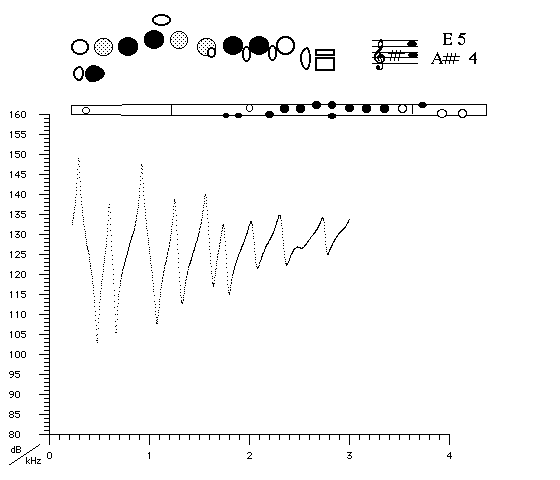| Acoustics of baroque, classical and modern flutes |
modern flute
|
multiphonic
|

|
Fingering Acoustic schematic Non-specialist introduction
to acoustic impedance |
This fingering may be considered as that for E4/ 5, but with a slightly misplaced register hole. Simultaneously, it could be considered as a fingering for C#5, but with considerable cross fingering to lower its pitch to ~A 4. The first two minima correspond to these pitches. The third, fourth and sixth minima can also be played.
4. The first two minima correspond to these pitches. The third, fourth and sixth minima can also be played.
A two-note multiphonic requires the superposition of two standing waves (whose frequencies, which are not in harmonic ratios, determine the pitches). Usually, this is achieved by opening one tone hole in a series of closed tone holes. The wave travelling downstream from the reed is partially reflected at the open tone hole, which makes one standing wave. The rest of the energy in the incident wave continues down the bore, until it reaches the first in a series of open tone holes. Here it is reflected to make the second standing wave.
For this situation to apply, the frequencies of the notes have to be such that the effect of the inertia of the air in the open tone hole is large enough to allow some transmission past the hole, but small enough to produce some reflection. For low-pitched notes, the tone hole is usually small.
| Acoustic measurements are available for these flutes - modern B, modern C, classical C, classical D, classical flared, baroque Sound clips are available for modern B, classical flared and baroque |
To compare flutes, it is easiest to open a separate browser window for each instrument. |